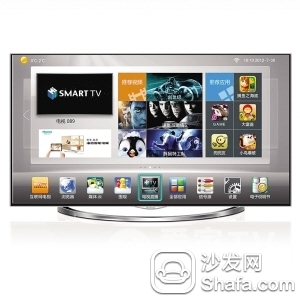"Internet +" came to the smart TV outlet

The traditional industry meets the Internet. Like a comet crashing into the earth, opportunities are rare and therefore quite dazzling. In 2015, “Internet +†was proposed as a national strategy. The integration of smart home appliances with the Internet in capital, strategy, and cooperation has become increasingly in-depth. As one of the cores of smart home appliances, color TV is the first to enter the “Internet+†development phase of “hardware + content + servicesâ€. The major color TV giants have already deployed Internet content and operations.
If we say that 2014 is the first year of smart home appliance industry, domestic smart TV will enter the eve of the outbreak in 2015. Konka launched SLED high-profile; TCL launched TV+ Quantum Dots; Haier held high the modular TV banner; Hisense introduced a display technology representative laser cinema; Skyworth set up a smart family strategy development department, and a floor smart home strategy; Changhong integrated into the mobile Internet eco-friendly new industry.
And these are just a scene in the "Internet +" drama of home appliance companies this year. Regardless of the stage of the show, such as the International Consumer Electronics Show (CES) in January or the China Household Appliances Expo (AWE) in March, or in the terminal sales battlefield, the domestic color TV sets have unprecedented strategic layout, technology research and development, and marketing. Innovations took the initiative to meet new opportunities for development and demonstrated the new image and strength of “China’s intellectual creationâ€.
Based on the stability of the RMB exchange rate and the implementation of the national “One Belt and One Road†strategy, the domestic color TV giants will compete to deploy the “Internet Plus†strategy, spur the charge of winning numbers and actively expand their overseas market territory. In overseas markets, relevant countries and regions are just beginning to produce the demand for the conversion of standard definition, and the market demand for digital products, especially HD products, is still very large. This has brought obvious overseas market opportunities to domestic color TV giants.
In the era of smart TV, as local brands such as Changhong, Skyworth, Hisense, TCL, Konka, and Haier have been catching up, former color TV overlord Japanese companies have contracted and withdrawn from overseas markets. On January 30, 2015, Panasonic closed its last color TV plant in Jinan, Shandong Province. From March 2015, Toshiba TV will gradually withdraw from overseas markets. The four brands of Japanese color TVs fell by half, and the sticking Sony and Sharp also shrouded in the shadow of losses.
In the country's new "Internet +" blueprint, domestic color TV manufacturers compete and seize the opportunity. In recent years, domestic color TV manufacturers have also established a high-end, intelligent transformation and development direction through the mastery of core technology and consumer demand, and established the strength advantage that leads the trend. For example, in the definition technology, the domestic color TV manufacturers took the lead in 4K display technology. In 2013, Konka took the lead in releasing 10 nuclear smart 4Ks TVs. Hisense focused on promoting ULED TVs with its own core technology, and Skyworth introduced full color. 4K TV, Changhong CHiQ also introduced the world's largest 105-inch surface ultra-high-definition television. Especially this year, Haier’s modular TV, Hisense’s ULED TV, TCL’s TV+ Quantum Dot, and True Color TV all have an advantage in core technology.
Hao Yabin, vice president and secretary-general of the China Electronic Video Industry Association, believes that Chinese brand TV companies are the leaders of smart TVs. Since launching the first generation of Internet TV in 1999, they have experienced several technical upgrades and always walk on smart TV technology. The forefront of innovation. Domestic color TV manufacturers are all oriented to customer needs, integrating industrial resources and creating smart TV screens for consumers that are better looking, fun, and easy to use.
To sum up, with the overall failure of Japanese brands, the trend of “Chinese goods†has become increasingly strong. With the arrival of the "Internet +" outlet, domestic color TV manufacturers are taking the initiative to attack and speeding in the smart era overtaking.
GPS Personal Tracker Co., Ltd. , http://www.szgpstracker.com